Persian Buttercup (Ranunculus Flower) Grow & Care Guide
Written by Iris
Jan 13 2023
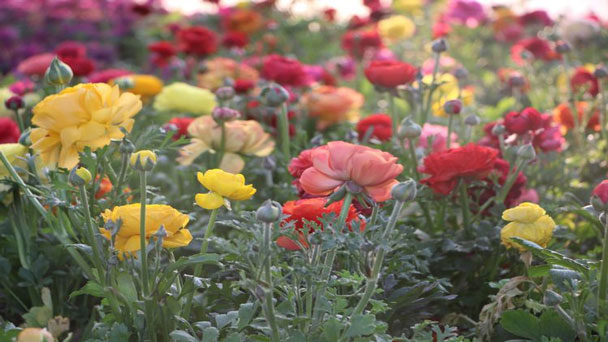
Persian Buttercups (Ranunculus Flowers) are beautiful, and they can be planted in pots or used as cut flowers. They are very popular among florists, but some florists don't know much about bulbous flowers. This article will introduce some Persian buttercup flower caring and growing tips.

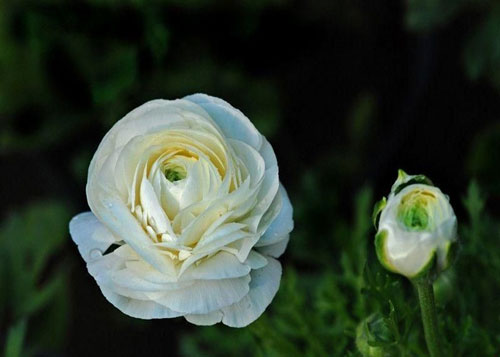
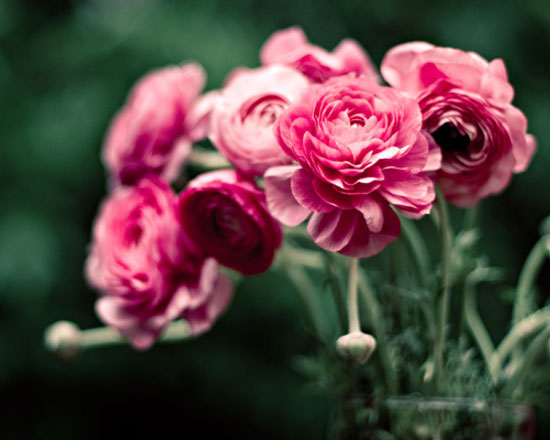
Alternatively, you can consider growing your ranunculus in pots or containers. When growing in pots or containers use sand or loam soil and amend it with peat moss, vermiculite or perlite. Avoid planting your ranunculus in areas where puddles remain long after rainfall or if you know your soil is heavy clay. (Read more about Growing Ranunculus in Pots.)
Apply water at the soil level if possible to avoid wetting the foliage. Water the entire soil area until water runs out the base of the pot. This indicates that the soil is thoroughly wet.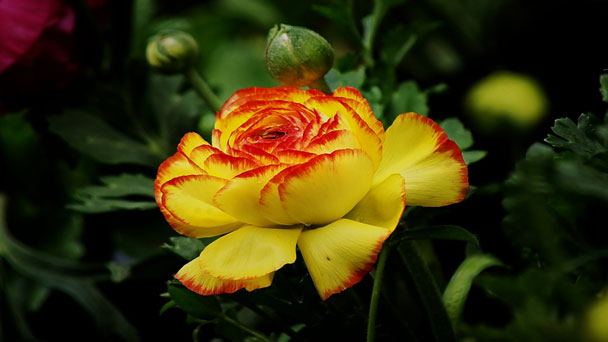
Some Persian buttercup plants will re-bloom on their own, but others may have very specific day-length or temperature requirements to flower again. A bit of research may be necessary to determine what is needed to encourage future blooming. Some plants, such as bulbs or perennials, can be turned into wonderful garden additions after the flowers have been enjoyed indoors.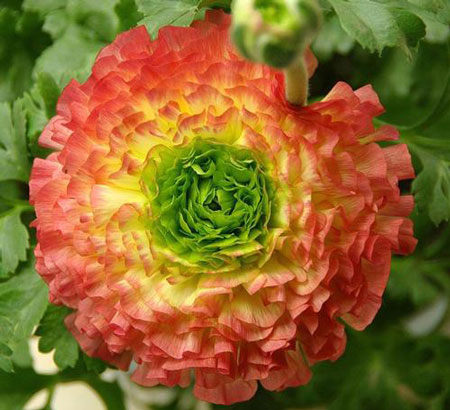
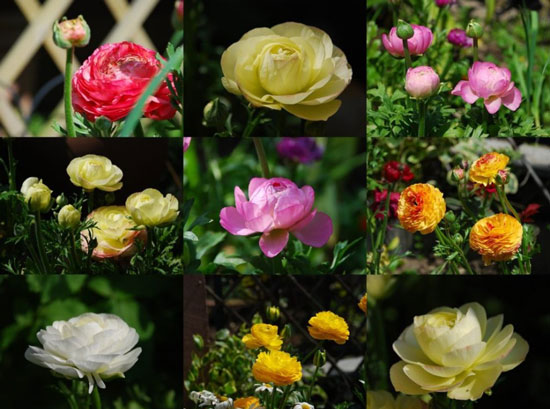
| Botanical/Scientific Name | Ranunculus asiaticus |
| Common Name | Persian buttercup, Ranunculus flower, Garden ranunculus |
| Plant Type | Herbaceous perennial, usually grown as an annual |
| Light Requirements | Full Sun |
| Soil Requirements | Well-drained soil |
| Bloom Time | Spring, Summer |
| Flower Color | White, pink, yellow, purple, red |
| Uses | Container flower, indoor flower |
| Toxic | Toxic to humans and pets |
Where to Grow Persian Buttercup FlowerWhen to Grow Persian Buttercup FlowerHow to Propagate Persian Buttercup FlowerPersian Buttercup Flower Propagation with SeedsPersian Buttercup Flower Propagation with DivisionHow to Grow & Care for Persian Buttercup FlowerPersian Buttercup Flower Light RequirementsPersian Buttercup Flower Soil CarePersian Buttercup Flower WateringPersian Buttercup Flower Temperature & Humidity CarePersian Buttercup Flower Fertilizer CarePersian Buttercup Flower Pruning CarePersian Buttercup Flower Pests & Diseases CareVarieties of Ranunculus FlowerPersian Buttercup Flower Care FAQIs Ranunculus Flower Poisonous To Pets And Humans?Is Persian Buttercup Flower a Perennial or an Annual?How Long Do Persian Buttercup Flowers Last?When Is The Best Time To Replant Ranunculus Bulb Outside?
Where to Grow Persian Buttercup Flower
Like most tubers, ranunculus flowers can adapt to a wide range of growing conditions as long as you give them full sun, sufficient moisture, and soil with good drainage. The one environment they can't tolerate is warm and overly wet, which can lead to rotting, says the National Gardening Association.
When to Grow Persian Buttercup Flower
ln areas where temperatures don't drop below 10° F, such as on the West Coast and in the South, Persian Buttercup flower (ranunculus flower) can be planted outdoors in fall with minimal protection. In colder areas where temperatures dip well below freezing for extended periods, wait to plant the tubers in late winter or early spring (once you’re sure the ground won't freeze) or start them indoors in pots about 12 weeks before the average last frost date. Once the plants emerge, Persian Buttercup flower can tolerate light frost. Ranunculus normally starts to flower about 90 days after planting.
How to Propagate Persian Buttercup Flower
Growing from both seeds and tubers, persian buttercup flower propagation is not complicated. If you desire to grow this frilly specimen in your landscape, read more to learn how to propagate Persian buttercup, Ranunculus, and which method is best for you.Persian Buttercup Flower Propagation with Seeds
Start this beautiful bloom from seeds, if you prefer. Some sources believe fresh seeds are the ideal way to start these flowers. Seeds germinate best in daytime temps of 60 to 70 degrees F. (15-21 C.) and nighttime temps of 40 F. (4 C.). When these conditions are available, get the seeds started. Moisten seed starting soil and place in a plug tray, biodegradable containers, or the seed-starting container of your choice. Locate seeds on top of the soil and place in an area away from direct sun and drafts. Keep the soil evenly moist. When propagating Persian buttercup from seeds, germination usually takes place within 10-15 days. Seedlings with four or more true leaves are ready for transplant to other containers, allowing for additional growth before moving them to the garden bed. Plant them outside when danger of frost has passed. Producing peony-like flowers that bloom in spring, ranunculus dies off when summer temperatures move consistently into the 90-degree F. (32 C.) range. Enjoy bountiful blooms multiplying in the garden until then.Persian Buttercup Flower Propagation with Division
You can propagate Persian buttercups (Ranunculus Flower) by dividing the tubers and removing offsets in autumn. This is the most common method of propagation. Originating from the eastern Mediterranean region, persian buttercups are not winter hardy north of USDA zone 7. If you are in zone 7 or above, you can simply replant the divisions in fall in different areas or in containers for an abundance of long-lasting blooms next spring. Those in northern zones should place their tubers in dry storage in vermiculite or peat over winter. When replanting in spring, soak the tubers in warm water for an hour or so. Then plant the tubers 2 inches (5 cm.) deep with the claws downward. Be sure to plant in soil with excellent drainage to avoid root rot. The plant won’t grow in heavy clay soil. Water in well when planting.
How to Grow & Care for Persian Buttercup Flower
Persian Buttercup Flower Light Requirements
Persian buttercups prefer a planting site that gets full sun (at least six hours of sunlight on most days) to grow and bloom best. For indoor container plantings, choose a south-facing, sunny window. (Read More: Buttercup Flower Meaning & Symbolism)Persian Buttercup Flower Soil Care
Ranunculus flower requires moist but well-drained soils for effective growth. Well-drained soil is important for growing Persian buttercups because soils with excess moisture or waterlogged soils can result to crown disease or root rot. If your garden soil does not have a good drainage you can create raised beds by amending the native soil with enough organic matter or manure. To effectively amend the soil, cultivate the soil to a depth of 9 to 12 inches working organic matter into the planting bed.Alternatively, you can consider growing your ranunculus in pots or containers. When growing in pots or containers use sand or loam soil and amend it with peat moss, vermiculite or perlite. Avoid planting your ranunculus in areas where puddles remain long after rainfall or if you know your soil is heavy clay. (Read more about Growing Ranunculus in Pots.)
Persian Buttercup Flower Watering
Most potted flowering plants prefer consistently moist but well-drained soil, so do Persian buttercup flowers. If the soil gets too dry the blooms can wilt and they may not recover. Check the soil moisture with your finger. If the top 2-4” (5-10cm) of soil is dry, or plants are wilted, it is time to water.Apply water at the soil level if possible to avoid wetting the foliage. Water the entire soil area until water runs out the base of the pot. This indicates that the soil is thoroughly wet.

Persian Buttercup Flower Temperature & Humidity Care
Persian buttercup flowers prefer cool spring weather and will begin to go dormant once summer temperatures pass 90 degrees Fahrenheit. A layer of mulch around the plants can help to keep the roots cool and extend their growing period. They're not overly picky about humidity, though very high humidity can cause the bulbs to rot and kill the plant.Persian Buttercup Flower Fertilizer Care
Fertilizer application is very important to produce a gorgeous-looking persian buttercup plant. You will need to apply a slow-release liquid fertilizer blend specifically designed for bulbs at least twice per month during the season of active growth. Ranunculus can suffer from iron and manganese deficiencies especially those growing in pots and containers. In this regard, use granular fertilizer or foliar fertilizer spray that contains iron and manganese.Persian Buttercup Flower Pruning Care
Remove the persian buttercups flowers as they fade. This keeps the plant looking tidy and may encourage more blooms depending on the type of plant. After flowering many blooming plants make attractive houseplants. Be sure to trim the foliage to maintain the desired size and shape. Occasional trimming encourages the plant to develop more side-shoots and flowers, and reduces the demand for the plant to develop a larger root system. This is important since the roots are in a confined space.Some Persian buttercup plants will re-bloom on their own, but others may have very specific day-length or temperature requirements to flower again. A bit of research may be necessary to determine what is needed to encourage future blooming. Some plants, such as bulbs or perennials, can be turned into wonderful garden additions after the flowers have been enjoyed indoors.
Persian Buttercup Flower Pests & Diseases Care
Several pests are drawn to Persian buttercup flowers, including spider mites, leaf miners, and aphids. These pests will feed on the leaves and render them splotchy, withered, and with a yellowish-brown color. Keep aphids away by spraying the plant with a mixture of water and mild dish soap in a bottle.
Varieties of Ranunculus Flower
There are multiple varieties of Ranunculus flower that range in appearance, including:- Ranunculus asiaticus 'Tecolote Red': This variety has deep red blooms that measure roughly 3 to 6 inches across.
- Ranunculus asiaticus 'Bloomingdale': These plants produce large flowers in several colors.
- Ranunculus asiaticus 'Café': This variety sports bronze-colored blooms.
- Ranunculus asiaticus 'Flamenco': These flowers are a mixture of yellow and orange with red around the edges.
- Ranunculus asiaticus 'Merlot': These plants can feature both deep red-purple flowers and white flowers.

Persian Buttercup Flower Care FAQ
Is Ranunculus Flower Poisonous To Pets And Humans?
Generally, all varieties of ranunculus plants are harmful to livestock and can as well be poisonous to pets and people. The plant has unpleasant taste and cause blisters and sores to form in the mouth. As a precautionary measure, it is necessary to plant ranunculus in an area where livestock and pets are unable to reach the plant. All species in the Ranunculus or buttercup genus contain the unstable glucoside ranunculin. When a ranunculus plant is wounded, the glucoside breaks down into glucose and a toxin called protoanemonin. Consumption of a ranunculus flower and other plant parts may result in blistering of the mucous membrane in animals, especially cattle and horses. Other effects of ranunculus poisoning include excessive salivation and diarrhea.Is Persian Buttercup Flower a Perennial or an Annual?
Persian buttercup flower can be grown as both a perennial and an annual. The Ranunculus is classified as perennial in the United States in hardness zones 6 through 11, depending on the specific species. It is possible to grow ranunculus as annuals outside those zones.How Long Do Persian Buttercup Flowers Last?
Fall-planted corms bloom in early spring and continue steadily for six to seven weeks. Late winter-planted corms will flower by mid-spring and continue for four to six weeks.When Is The Best Time To Replant Ranunculus Bulb Outside?
Replant the Persian buttercup flowers outside when all danger of frost has passed and the first true leaves are evident.Latest Updated
- Benefits of Bugleweed - 7 Science-backed Health Benefits
- Bugleweed Dangers & Side Effects - Is It Poisonous?
- How to Plant Evergreen Trees - What You Should Know
- When to Plant Evergreens - Grow Guide for Evergreen Trees
- 12 Wonderful Evergreen Shrubs for Your Garden
- 12 Popular Evergreen Plants with Pictures for Beginners
- When And How To Prune A Lilac Bush Like a Pro
- How to Grow & Care for Lilac Vine (Hardenbergia Violacea)
- Japanese Lilac Tree (Syringa Reticulata) Care & Propagation Guide
- Shumard Oak Pros and Cons - What to Know
Popular Articles
- Winter maintenance of Antirrhinum Majus
- How to Grow Terminalia Mantaly Tree
- How to Grow and Care for Crossostephium Chinense
- How to grow Antirrhinum Majus in spring
- Peristeria Elata (Dove Orchid) Profile: Info & Care Guide
- Underwatered Snake Plant (Sansevieria Trifasciata) - Signs And How To Fix
- How to Care for Brazilian Jasmine Plant (Mandevilla Sanderi)
- How to Grow & Care for Graptopetalum Purple Delight in Summer
- Rosa Chinensis (China Rose): Plant Growing & Care Tips
- How to Care for Baby Sun Rose (Aptenia Cordifolia)